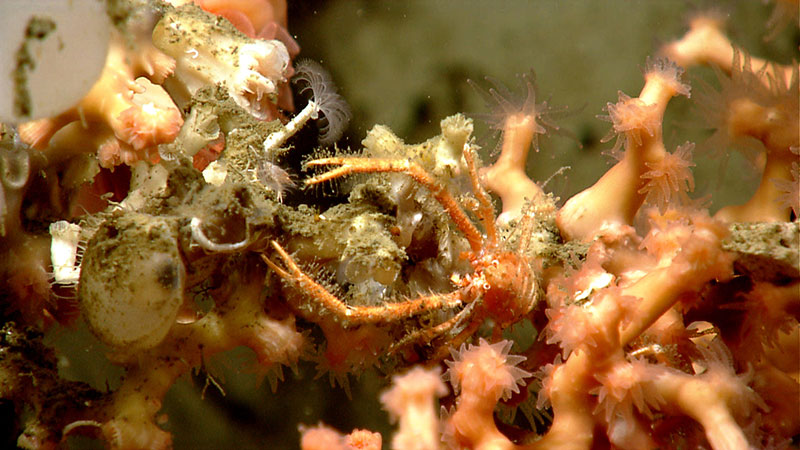The final dive of the expedition, dive 16, was conducted in an inner canyon area (in an unnamed minor canyon) informally named “Gauntlet Minor.” The purpose of this dive was to conduct a first-order characterization of the geomorphology and benthic habitats on both the east and west walls. The remotely operated vehicle Deep Discoverer (ROV D2) reached a slightly sloped area covered in soft sediment in the northern region between the east and west walls at a depth of 1,110 meters. Anthropogenic trash and debris, including monofilament line and balloons, were observed in this area. Fishes were prevalent, including cutthroat eels, witch flounder, and several rattails. Boulders, disarticulated bivalve shells, and coral rubble, including dead, broken attached pieces of cup corals and a branching stony coral, were apparent on the seafloor. Several octocoral colonies were seen on the boulders. D2 moved up slope and reached a vertical wall face with a higher abundance of fauna (animals), including stony corals and octocorals, from 1,078 - 1,030 meters. The ROV continued upslope over a thicker sediment cover with no corals to the top of the wall at 1,020 meters. D2 then moved northward and came back down slope, seeing an abundant line of coral colonization at approximately 1,030 meters, with the same dominant fauna. The ROV continued west over a mostly soft sediment bottom with scattered coral and rock rubble at the base of the western canyon wall. Moving upslope on the western wall, it was noted that the same type of faunal assemblages was observed as on the east wall, yet with greater apparent density at 1,070 meters depth. Near the end of the dive, a few additional corals were observed that were not seen on the east wall, including an unidentified black coral and a few bamboo corals. The ROV departed from the seafloor at a depth of 1,030 meters.
